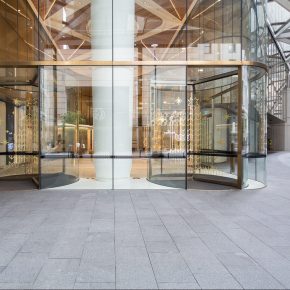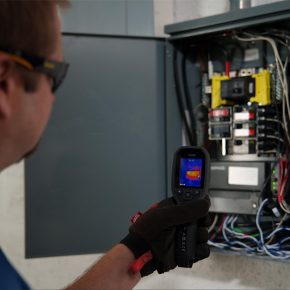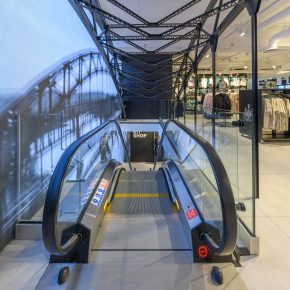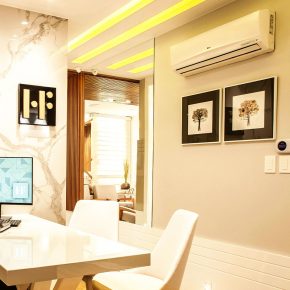
ADSA: Seismic Step Change for Security
The new Labour Government has committed to introducing ‘Martyn’s Law’ – flagging the new anti-terrorism bill featured in the King’s Speech. The legislation is intended to improve safety and security of public venues and to ‘keep the British public safe from terrorism’. It would require large venues to put in place anti-terrorism measures to tackle terror threats. ADSA considers its impact and urges the automatic door industry to start planning now…
We live in dangerous times – when we consider entrance solutions, our approach must extend beyond dynamic design aesthetics and basic functionality, to higher degrees of safety and security.
Earlier this year, a public consultation took place into ‘Martyn’s Law’. This draft legislation is named after Martyn Hett, who was tragically killed alongside 21 others in the Manchester Arena terrorist attack in 2017. Prior to the election being called, feedback from a consultation process was being analysed prior to ascent to Parliament.
If made law, The Terrorism (Protection of Premises) Act will affect organisations, businesses, local and public authorities, and individuals who own or operate publicly accessible premises or events. It is likely to have a profound impact on the need for effective entrance solutions for concert halls, stadiums, shopping centres and any other venues with capacity greater than 800.

The Act could introduced as early as next year and would require venues to fulfil ‘necessary but proportionate steps’ according to their capacity (based on standard or enhanced tiers) in order to mitigate the impact of a terrorist attack and reduce harm. In addition to the new bill, there remains an existing duty of care for organisations to ensure that employees are not put at risk.
So, what might requirements for enhanced entrance solutions mean in practical terms?
– Increased Demand for Security Technology: Entrance solutions providers would see a surge in demand for advanced security technologies. This might include biometric scanners, facial recognition systems, or automated threat detection systems to enhance the screening process while maintaining efficiency.
– Integration of Comprehensive Security Systems: Venue owners would need to invest in integrated security systems that cover all aspects of entrance control, from ticket validation to threat detection. Entrance solutions would need to seamlessly integrate with surveillance cameras, access control systems, and emergency response protocols to provide a holistic security approach.
– Adoption of Access Control Measures: Access control measures, such as turnstiles, gates, or barriers, would become more commonplace at venue entrances. These systems would help manage the flow of people while ensuring that only authorised individuals enter the premises. Integration with ticketing systems and ID verification processes would be essential for effective access control.
– Enhanced Screening Processes: Entrance solutions would need to incorporate more robust screening processes to detect potential threats, such as weapons or explosives. This might involve the deployment of metal detectors, X-ray scanners, or explosive trace detection technologies to supplement traditional bag checks and pat-downs.
– Focus on User Experience: While security is paramount, venue owners would also need to prioritise the user experience to minimise disruption and maintain a positive guest experience. Entrance solutions providers will need to innovate solutions that balance security requirements with efficiency and convenience, incorporating speed lanes for pre-screened individuals to reduce wait times.
– Regulatory Compliance: Entrance solutions would need to adhere to stringent regulatory requirements mandated by ‘Martyn’s Law’. This could involve certifications for security standards, regular audits of entrance control systems, and ongoing training for staff to ensure compliance with evolving security protocols.
Darren Hyde, ADSA’s Technical Training Manager, believes that one of the potential ways to reduce risk would be using Powered Pedestrian Doors (PPDs) with lock down systems, in conjunction with internal powered operated entrance control equipment (POPECE) – speed lanes or turnstiles.
“For PPDs, security must always be matched with user safety,” he says.
“A correctly specified system can achieve both. The latest version of Standard EN 16005:2023 highlights the need to prevent contact with users if they are vulnerable. Risk assessments to ensure the correct level of safety is paramount to create a safe system for all users. It is possible to achieve this while installing a system that can meet the latest security standards.
“ADSA has produced a document that advises on the difference between all these different security standards which is available to all its members.”
In 2022, the first standard for safety in use of POPECE – BS EN 17352 – was published. This has subsequently been harmonised/designated to become a minimum legal requirement for safety levels. Some of these products not only work as a deterrent but can also add higher levels of security.
Just like PPDs, it is essential that these products are correctly specified to meet building security and users’ safety requirements. If it is probable that vulnerable traffic could be using POPECE equipment, it is essential that the levels of safety defined within EN 17352 are exceeded.
Darren continues: “Correctly specified POPECE equipment fitted with smart access control, could assist in verifying identities and numbers of persons that are within the building. They could also interface with facial recognition equipment to further boost security measures, similar to those that you see in some modern airports.”
Although legal requirements may still be a year away, architects and venue owners are being urged to consider requirements now to incorporate with new developments or plan retrofit requirements for existing ones.
Co-op Live
The need for preparation in the management of such buildings was highlighted in recent months. Co-op Live, a new 23,500-capacity venue in Manchester – the same city as the 2017 attack – hit the headlines for all the wrong reasons. It was forced to cancel scheduled gigs by comedian Peter Kay due to ‘safety concerns and delayed power tests’.
Developed as the UK’s largest arena, it is ‘fully electric’ but test issues at its launch prompted the resignation of its general manager.
This only underlines the need to address all aspects of integration and smart building control and similarly, the automatic door industry must do the same in respect of the development of innovative solutions and the development of its people.
Likewise, architects, specifiers and building owners and managers need to plan for sizeable work projects and make themselves aware of market solutions that can adequately address all needs.
ADSA training covers standards for both PPD and POPECE.
For more information on training courses, visit www.adsa.org.uk or phone 01827 216136.
Visit Supplier's page
Latest news

25th April 2025
Quicker and Easier Inspections with High Performance FLIR Testing Solutions
FLIR, a Teledyne Technologies company, introduces its PV range of inspection solutions to expedite panel installation and maintenance at solar farms, commercial buildings, and residential buildings.
Posted in Articles, Building Industry News, Building Products & Structures, Building Services, Facility Management & Building Services, Information Technology, Innovations & New Products, Research & Materials Testing, Restoration & Refurbishment, Retrofit & Renovation, Sustainability & Energy Efficiency, Thermal Imaging and Monitors
25th April 2025
Schlüter-Systems: Common costly mistakes when renovating a bathroom
With nearly six decades of experience in the bathroom world, Schlüter-Systems knows all there is to know about the challenges of installing a perfect one!
Posted in Articles, Bathrooms & Toilets, Bathrooms, Bedrooms & Washrooms, Building Industry News, Building Products & Structures, Building Services, Damp & Waterproofing, Drainage, Drainage Services, Drainage, Guttering, Soffits & Fascias, Heating, Ventilation and Air Conditioning - HVAC, Interior Design & Construction, Interiors, Membranes, Pipes & Fittings, Plumbing, Restoration & Refurbishment, Retrofit & Renovation, Walls
25th April 2025
Newcastle United enhances fans’ experience with Stannah escalators
Newcastle United Football Club has introduced two new Stannah escalators as part of a refurbishment of its on-site merchandising outlet.
Posted in Accessibility, Articles, Building Industry News, Building Products & Structures, Building Services, Case Studies, Facility Management & Building Services, Restoration & Refurbishment, Retrofit & Renovation
24th April 2025
Gemini: Using Data Loggers to Help Analyse Environmental Conditions and Energy Usage in Buildings
Gemini Tinytag Data Loggers record environmental parameters over time, allowing conditions to be measured, documented, analysed, and validated.
Posted in Articles, Building Industry News, Building Products & Structures, Building Services, Facility Management & Building Services, Health & Safety, Heating Systems, Controls and Management, Heating, Ventilation and Air Conditioning - HVAC, Information Technology, Research & Materials Testing, Restoration & Refurbishment, Retrofit & Renovation, Sustainability & Energy Efficiency, Thermal Imaging and Monitors
 Sign up:
Sign up: